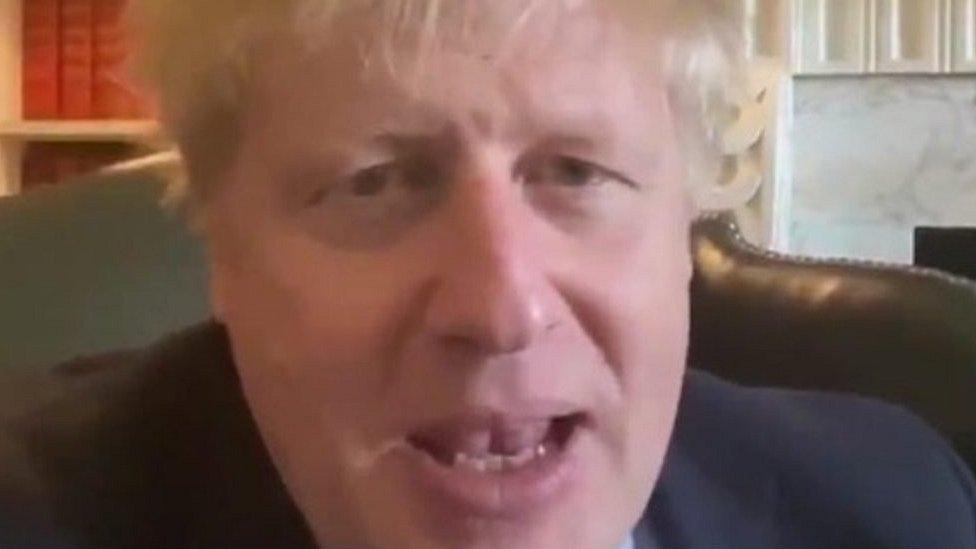Coronavirus: PM's diagnosis still came as a shock
- Published

Boris Johnson made a statement about his condition on social media
Maybe it was inevitable.
One of the first moments that raised eyebrows in the course of the UK outbreak was when health minister Nadine Dorries came down with coronavirus.
Then, last week, we discovered that some key staff in Number 10, including the prime minister's chief Brexit negotiator David Frost, were self-isolating with suspected symptoms.
A fair number of MPs took themselves off into isolation for fear of having contracted the infection.
Their remaining colleagues were continually ordered to sit far apart on the green benches, before finally, this week, Parliament itself closed early, with no certain date for a return of normal business.
Still, the news that the prime minister himself has contracted coronavirus felt like a shock.
Within a couple of hours we discovered that Health Secretary Matt Hancock has the illness too.
Both of their symptoms are said to be mild. They have now joined much of the country in that most common of activities, WFH - working from home.

A SIMPLE GUIDE: What are the symptoms?
AVOIDING CONTACT: Should I self-isolate?
LOOK-UP TOOL: Check cases in your area
MAPS AND CHARTS: Visual guide to the outbreak

Questions are swirling, of course, about who else that is part of coordinating the fight against this disease may fall victim soon.
Chancellor Rishi Sunak is said to be well, and has not been tested, and nor has the prime minister's chief adviser Dominic Cummings.
There is no information that suggests the country's senior scientists, who are at the forefront of the effort to combat the virus, have taken ill.
Mr Johnson's team say that he is absolutely well enough to carry on in the job.
He is self-isolating in the 10 Downing Street flat, which links through to part of Number 11 too, and is carrying out his usual duties, including chairing Friday morning's coronavirus meeting, by video link.
But with the prime minister now a victim of the virus itself, this is anything but business as usual.
